William Jesse Reginald Maggs
known as 'Reginald'
2nd Battalion
Lance Corporal 47244
| Lancashire Fusiliers 2nd Battalion Lance Corporal 47244 | ||
| Died 29th April 1918 |
Reginald Maggs' Parents | ||
|
Reginald Maggs
was the eldest son of Jesse Maggs and Eliza (née Oram). Jesse Maggs
Jesse Maggs grew up in Twerton, the son of a woodworker, with 5 siblings. In 1871, the family lived in Twerton High Street, but by 1881 (when Jesse was 17) had moved to 12 Ladymead, an address in Walcot Street near the centre of Bath. Jesse’s father (William) died in 1882, leaving Jesse's widowed mother Martha as head of the household. The 1891 census lists the family living in at 13 Angel Place on the Lower Bristol Road. Angel Place was a terrace that backed onto the railway viaduct near the Old Bridge (now Churchill Bridge), but changes to the road system in the 1960s saw most of the terrace demolished. The sole remaining house in Angel Place today is, coincidentally, number 13. | ||
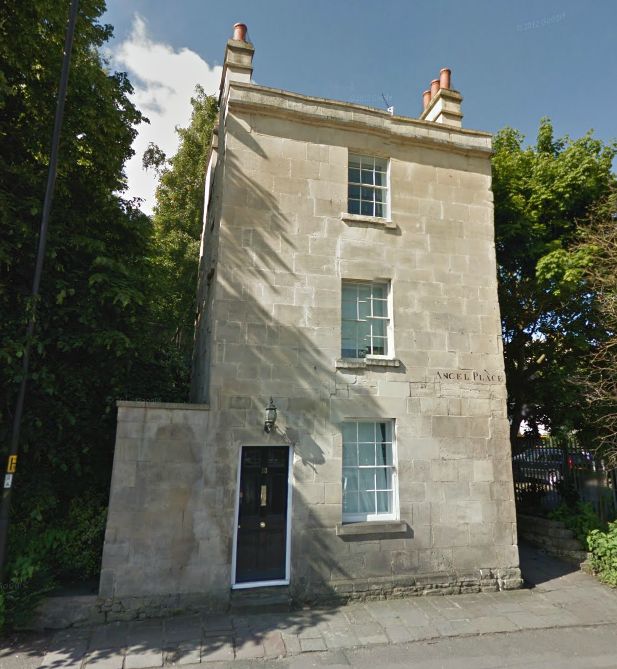 | ||
| 13 Angel Place, home to Reginald's father in 1891 |
|
In 1891, Jesse was listed as a hairdresser, with his eldest
brother working as an iron moulder (probably at nearby Stothert & Pitt) and
other siblings as a shorthand writer (possibly at the Pitman Press) and a Post Office official, respectively. Jesse Maggs was mentioned in the newspaper in October 1891
as the victim of theft, when he had a pair of clippers stolen from his shop at
4 Upper Borough Walls. The villain of the piece was called George Barber! The
article also mentions that Jesse had just left a shop in Claverton Street. Eliza Oram
Reginald’s mother, Eliza Oram, was born in Edington, Wiltshire, in a part of the village known as Tinhead. She was there in 1871, aged 4, with her family headed by her father who was an agricultural labourer. Ten years later, Eliza was a few miles away in Poulshot, near Devizes, as servant to the family of a dairyman on a large farm. By 1891, she had moved to Bath and was domestic servant to a lodging house keeper at 16 Edward Street. 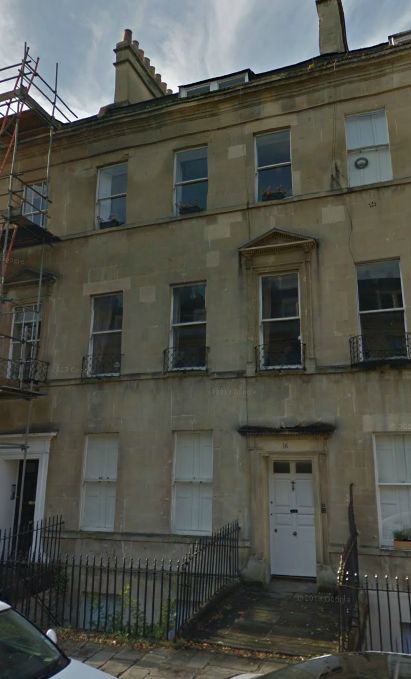 16 Edward Street, home to Reginald's mother in 1891 |
The Maggs Family |
|
Jesse & Eliza married in 1892 at St Michael’s church in
Broad Street. |
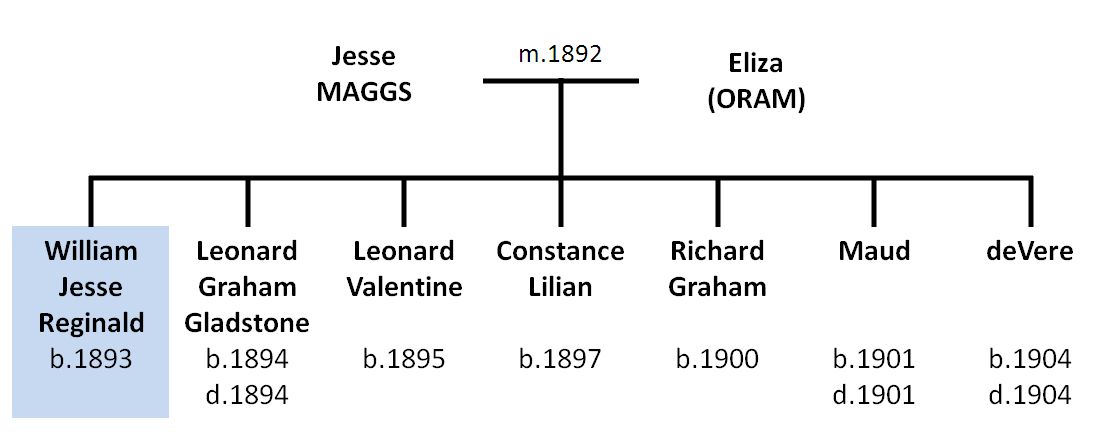 |
| Jesse & Eliza first lived at 4 Upper Borough Walls, where Jesse carried on his work as a hairdresser. As markings on the wall still show, the boundary between St Peter & St Paul’s parish (Abbey parish) and St Michael’s parish runs between numbers 2 & 3 Upper Borough Walls, so the address at number 4 was in St Michael’s parish, hence the marriage was conducted at that church. The couple lived in Upper Borough Walls until 1903. |
|
Reginald was born
on 29th March 1893. He took the Christian names of his paternal grandfather (William) and
father (Jesse), but was known by his third given name ‘Reginald’. Five further children were born to the family during their
time in Upper Borough Walls. Two of these died in infancy and they were
therefore a family of six (plus a ‘general servant’) – as captured in the 1901
census – when the family lived briefly in Milsom Street. On the same census
sheet (seemingly at the same address, 38 Milsom Street) is the famous Victorian
photographer Graystone Bird, then aged 39 and living with his wife &
mother-in-law! |
 | ||
|
In 1907 the family moved again to 84 Holloway. This was the
‘old’ face of Holloway, prior to its complete redevelopment in the 1960s/70s.
Number 84 would have been a few doors below what is now called Paradise House,
an upmarket B&B, but some of the housing in Holloway in general was
anything but upmarket prior to its demolition. |
 | ||
|
Holloway, where the Maggs family lived in one of the houses towards the right-hand side of this photograph. |
|
An enigmatic photo resides with the descendants of Richard Maggs (Reginald's younger brother) and has been provided to us by Malcolm Curran, Richard's son. It shows the Maggs family group and features Constance (who is unmistakeable from comparisons with other family photographs) bottom left, in spectacles . She appears to be circa age 10; given that she was born in 1897, this would place the photo in circa 1907. Richard, her younger brother, is bottom right and appears to be 6 or 7 years old, which fits. Seated between them is Reginald's mother, Eliza. Behind these three are two men in uniform. Back left is an older man. A comparison with a later photo of father Jesse (shown near the bottom of this page) make it highly likely that this is him, based on the moustache and the shape of his face. The plain army uniform is topped off with a cap bearing the badge of what appears to be the West Kent Regiment. Back right is a younger man with a Somerset Light Infantry cap badge. Comparisons with the portrait photo at the top of this page would indicated that it is not Reginald, which mean it is likely Leonard, who would have been age 12 in 1907. Leonard went on to suffer from a condition called exophthalmic goitre, which mean his appearance is somewhat changed in other, later, family photographs, but this does appear to be him. The enigma here is why Jesse and Leonard (if it is them) would appear in army uniform in circa 1907. Why is the older man wearing the West Kents badge? And why would Reginald not be in the photograph? Perhaps he is the photographer?
Family photo circa 1907 showing Jesse(?), Leonard (?), Constance, mother Eliza and Richard [Photo supplied by Malcolm Curran, son of Richard Maggs] After 1909 the family lived at 9 Dorchester Street, where father Jesse ran a hairdresser & tobacconist shop, with Reginald (aged 18) listed as a ‘tobacconist’s assistant’ in the 1911 census. It is in fact Reginald who completed the 1911 census form for the family, so we have a sample of his handwriting! Father Jesse was again a victim of theft in 1909 when a Mr Charles Self stole a pipe from his Dorchester Street shop. And we know that Reginald worked in his father's tobacconist shop prior to the war and during the early months of the war itself. Information supplied by Reginald Maggs' nephew, Malcolm Curran, reveals that Reginald
had a sweetheart by the name of Mabel Russ, who was a seamstress at Colmer's in Union Street, as well as being a Sunday School
teacher at St Michael, Broad Street and who lived in Bathwick. |
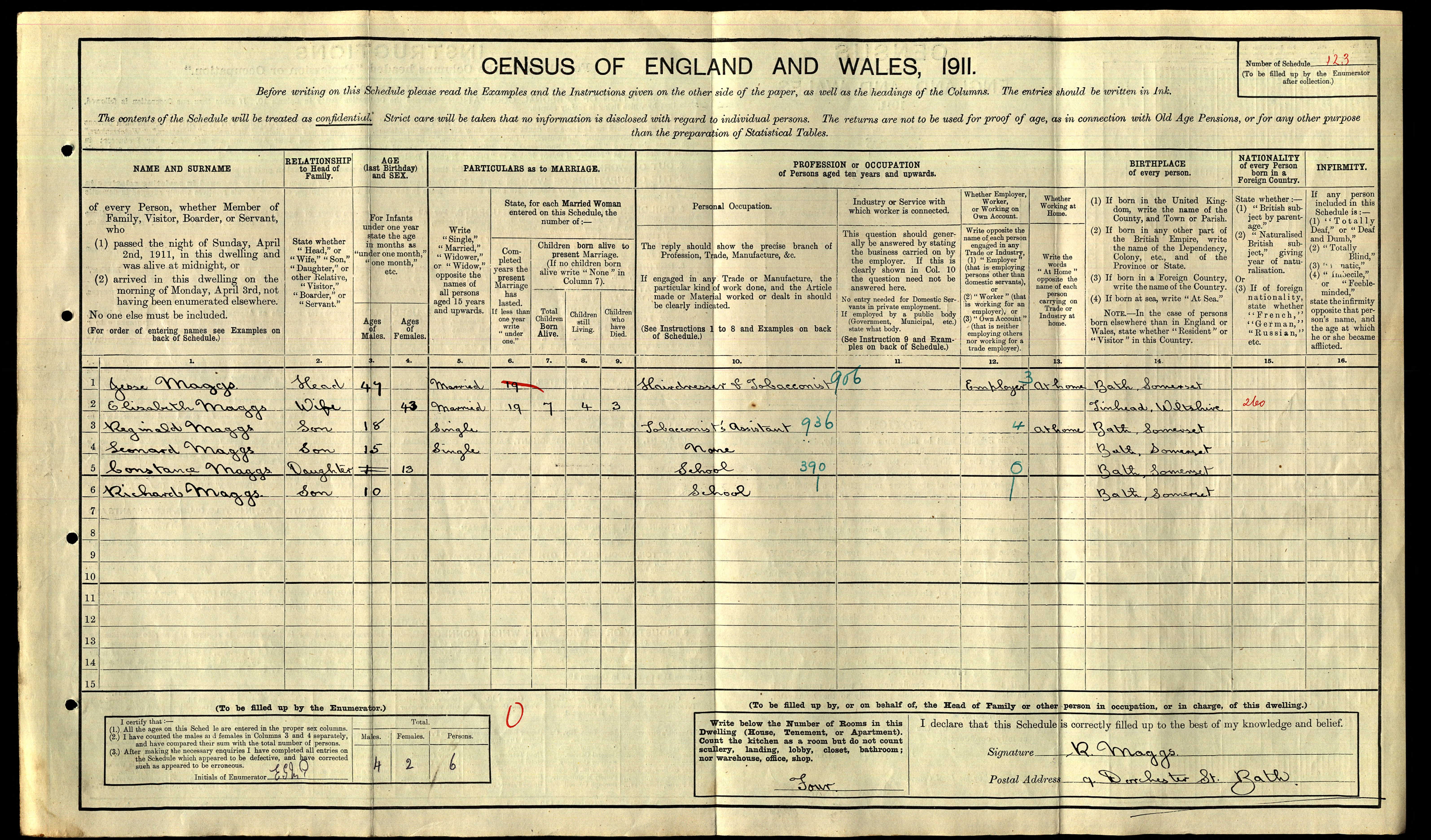 | ||
|
The 1911 census form completed by Reginald on behalf of his father |
Reginald Maggs in WW1 | ||
1st Battalion, Somerset Light InfantryReginald Maggs
enlisted with the 1st SLI on 12th April 1915. the 1st SLI served in
14th Division (11th Brigade), which was a Division of Regular Army
(i.e. no territorials etc.).However, we know from a newspaper report in February 1916 that Reginald had not joined his regiment. He was described in the newspaper as being 'an attested man' (i.e. he had joined up), but was at that time applying to the (military) recruitment tribunal for a certificate that would delay his call-up for a month. It said he was 'Group 10' and requesting to be put back to 'Group 20'. He is described at this time as the manager of a tobacconist's shop owned by [his father] Jesse Maggs. So it's possible that, although he enlisted in 1915, he didn't actually join an active unit until circa March 1916. We know from the following photographs supplied by Reginald's nephew, Malcolm Curran, that Reginald was at a training camp with the Somerset LI in what appears to be the summer of 1916: 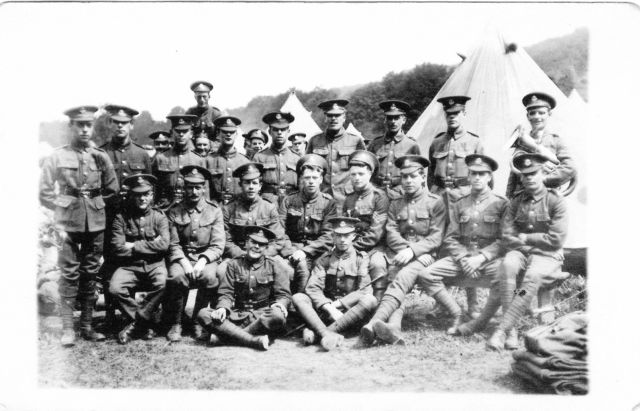 Reginald is in this photo, but it is hard to pick him out [Photo supplied by Reginald's nephew Malcolm Curran]  Reginald Maggs is standing, third from the left [Photo supplied by Reginald's nephew Malcolm Curran] 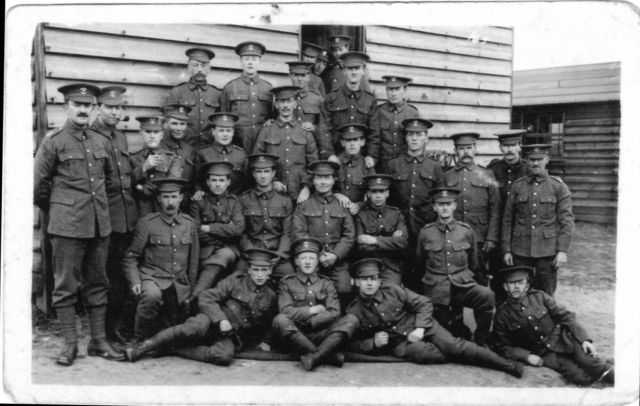 Reginald Maggs is fifth from the left in the middle row [Photo supplied by Reginald's nephew Malcolm Curran] 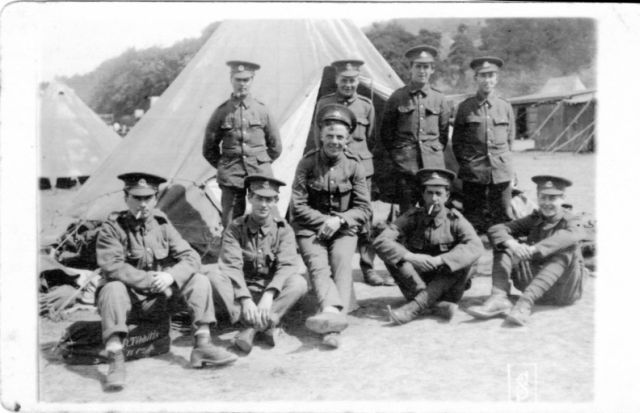 Reginald is standing in front of the tent opening [Photo supplied by Reginald's nephew Malcolm Curran] Middlesex RegimentAt some point, Reginald transferred - probably still within the 14th Division - to the Middlesex Regiment (10th Brigade?), where he was a Lewis Gunner. The Lewis gun was a novelty in WW1 and was the first effective light machine gun. It had a circular cartridge on the top and a large shroud around the muzzle, which housed aluminium fins designed to take the heat away.This was the kind of gun that could be carried by one man, although it was usually operated by a team of between two and six men, as the cartridges required manual loading and any technical problems could require a quick strip-down and rebuild under difficult conditions. Moving around also necessitated support personnel to carry ammunition etc. The Lewis gun was largely employed in the front line, to cover advances or to repel an attack. The gun was much more mobile than a larger, fixed machine gun emplacement. We know that Reginald was with the Middlesex Regiment in Kent from the autumn of 1916 through until at least the spring of 1917, from where he sent postcards to his sweetheart Mabel Russ, back in Bath. These postcards are in the possession of the family and reveal the neat handwriting and sense of humour of an educated young man. Reginald served with the Middlesex Regiment until September 1917, at which point he transferred to: 2nd Battalion, the Lancashire Fusiliers
Reginald Maggs' serial number of 47244 could be used to corroborate his date of joining this regiment, which was in 12th Brigade / 4th Division. The unit diary for 2nd Battalion the Lancashire Fusiliers is available from the National Archive and we have a copy on record. Please get in touch if you would like more details than are shown here. Having joined 2nd Lancs in September 1917, we know that Reginald would have been with them through the following engagements, some of which rank among the worst battles of the war, in terms of human loss and of the conditions in which the men had to survive:
| ||
Reginald Maggs' Death | ||
From the Bath Chronicle & Weekly Gazette, 18th May 1918:
De
Ruvigny's Roll of Honour states that Reginald Maggs was killed while at
a rest billet on 29th April. His burial at Gonnehem fits with where his
unit was at this time. The unit’s war diary includes facsimiles of the
following messages: From General Horne, commanding 1st Army: “Please accept and convey to units which have fought to-day my
admiration of the skill and determination displayed by Commanders, Staffs and
all ranks. A very heavy attack pushed home by vastly superior numbers has been
repulsed with heavy loss to the Germans. The troops have shown a splendid
spirit and may well feel proud of their achievement.” From the Military Secretary: “The Commander in Chief sends his congratulations to Major-General Matheson
and all ranks of the 4th Division on the successful operations
carried out by them on the 14th/15th and 17th
inst, and on the way in which they have succeeded in advancing their line.” Extract from The Times dated 25th April 1918: “ESPECIALLY GALLANT 4th” “The Commander in Chief has requested the Army Commander to convey his congratulations to all ranks of the 4th Division. “(The 4th Div was mentioned in the official tribute by Sir
Douglas Haig which appeared in The Times yesterday for “Especially Gallant”
service on March 28th and the operations of April 14th/15th
and 18th were also referred to. “I doubt if any division” wrote our
special correspondent on 23rd inst “has killed more Germans than 4th”)”.
Reginald Maggs was 25 when he died. According to De Ruvigny's Roll of Honour: "His
Commanding Officer, in writing to his parents, spoke very highly of
him, and of the splendid way he behaved during the severe fighting in
March*, when the enemy tried to break through at Arras. he also spoke
of the excellence of his work as a Lewis Gunner. L-Corpl. Maggs was
thanked by the Major-General commanding the 4th Division on 1st January
1918 for good work and devotion to duty, and was congratulated by him
on his fine behaviour."
| ||
Burial | ||
| Reginald
Maggs is buried in Gonnehem British Cemetery. From the Commonwealth War Graves Commission: "The
cemetery was begun in the middle of April 1918, when the German front
line came within 3.2 kilometres of the village. It was made by fighting
units and by the burial officers of the XIII Corps and the 4th
Division, and used until September." | ||
|
Gonnehem cemetery [Source :www.cwgc.org] |
Reginald
Maggs' grave at Gonnehem Cemetery was visited in June 2019 by Bath
resident Mike Sumsion, who made a point of using that trip to seek out
the graves of several of the men from the school memorial. He took with
him memorial crosses from the school and from relatives of Reginald
Maggs to place on the grave. Our thanks go to Mike for adding to the
school's remembrance of Reginald Maggs and for provising us with the
following photograph: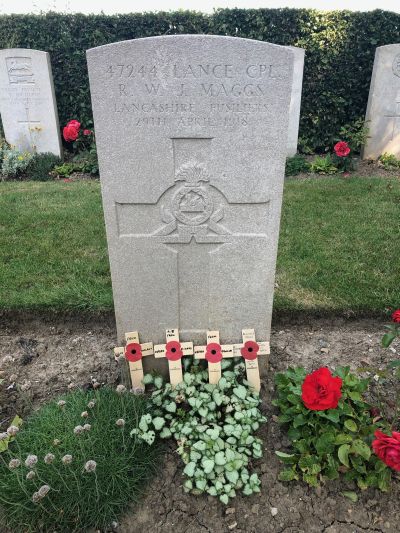 |
Decoration |
|
Reginald Maggs' medal card does not survive, but he would have been awarded the British War Medal 1914-18 and the Allied Victory Medal posthumously. |
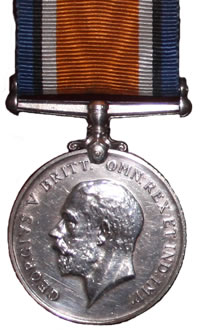 | 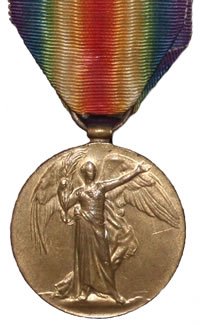 | ||
| British War Medal 1914-18 | Allied Victory Medal |
|
Reginald Maggs' nephew, Malcolm Curran, had also sent us a photograph of the 'Death Penny' sent to Reginald's family; these were issued to the kin of all men killed in active service in the war.
|
Commemoration | ||
South Twerton School Memorial  In addition to his commemoration on the South Twerton School memorial, Reginald Maggs is commemorated as follows: | ||
|
Bath War Memorial See separate page for details of the Bath War Memorial. Reginald Maggs' inscription: |
 |
|
St. Michael's Church Memorial (now St. Michael & St. Paul, Broad Street) We know that Reginald Maggs' early years were spent living in the parish of St. MIchael's, in Upper Borough Walls. Whether this - or some other, later involvement with the church - qualified him for inclusion is unknown.The memorial is in the west aisle of the church.St. Michael's church have done their own research on all the names included on their memorial and this was displayed in the church in 2014. This memorial, with its winged St Michael slaying the dragon (replicated on the former church hall in Walcot St) and its very 'arts & crafts' feel, is a particularly attractive example. |
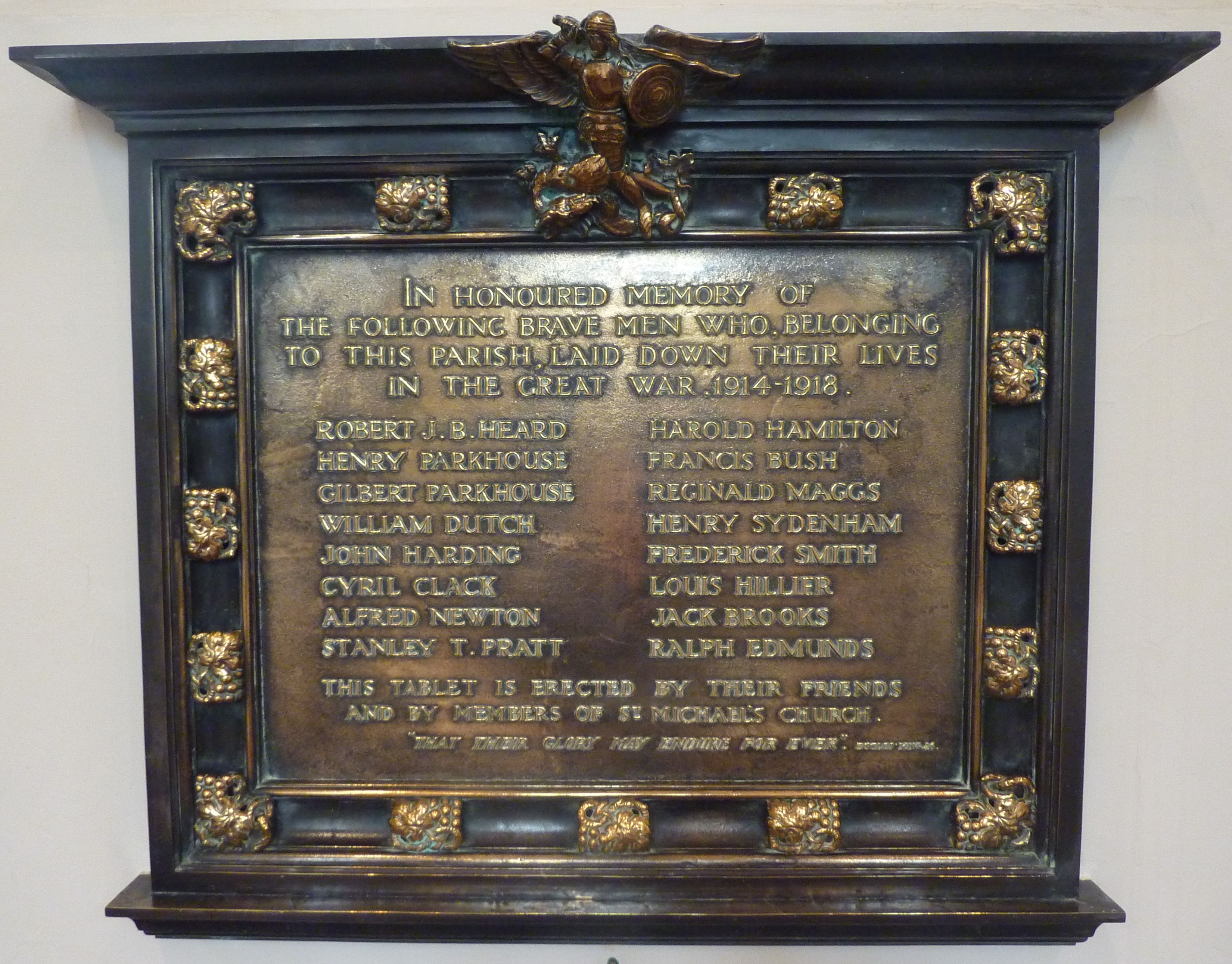 |
St James Church Memorial Reginald Maggs is also commemorated on a brass plaque that was originally displayed in St James Church, Bath. This church stood where Marks & Spencer is now at the top of Southgate Street, but was bombed in 1942 and burned out as a result. The plaque was rescued and is now on display in St Barnabas Church, Southdown, where it is on view in the porch. More details on this memorial can be seen here. |
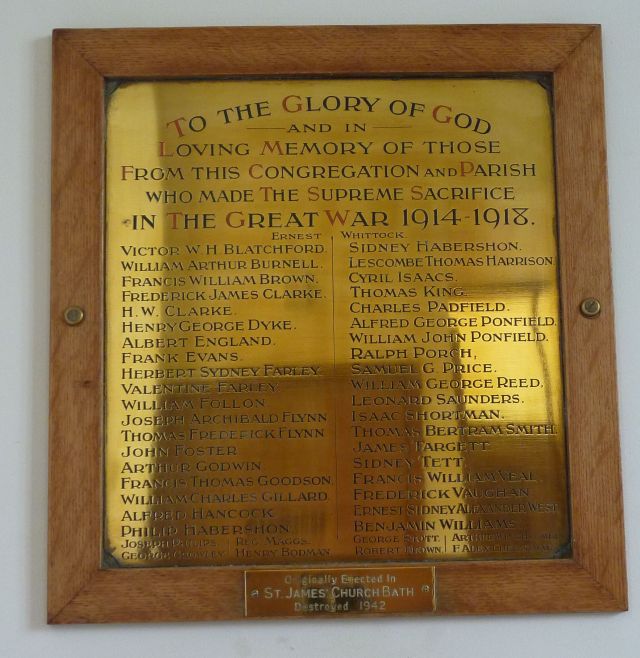 | ||
|
The St James Church memorial, now displayed in the entrance porch of St
Barnabas Church, Southdown. 'Reg Maggs' appears in small letters in the second of the four small columns at the bottom. |
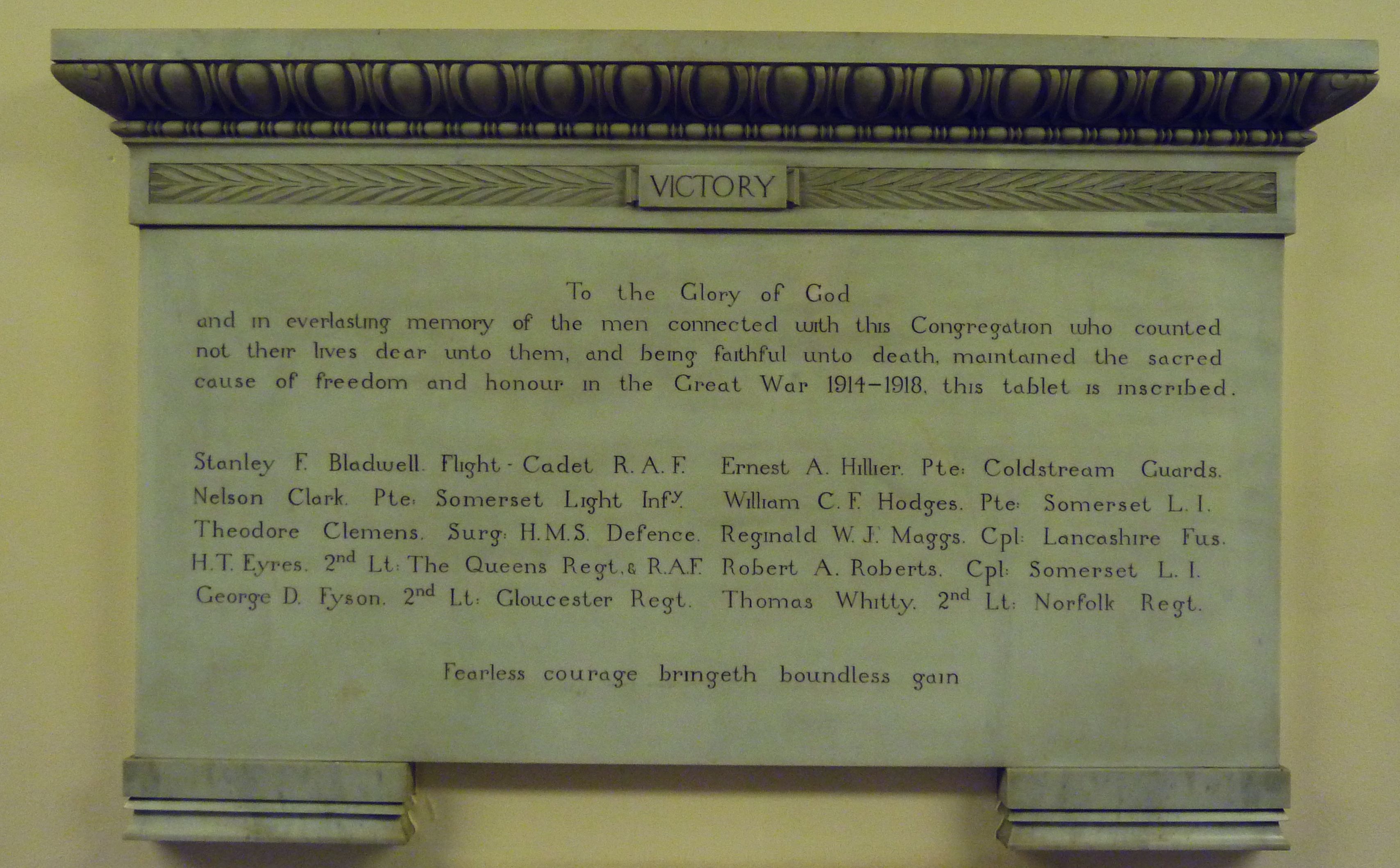 |
Reginald Maggs' inscription:  The second memorial in Argyle URC church is a personal one to Reginald Maggs: 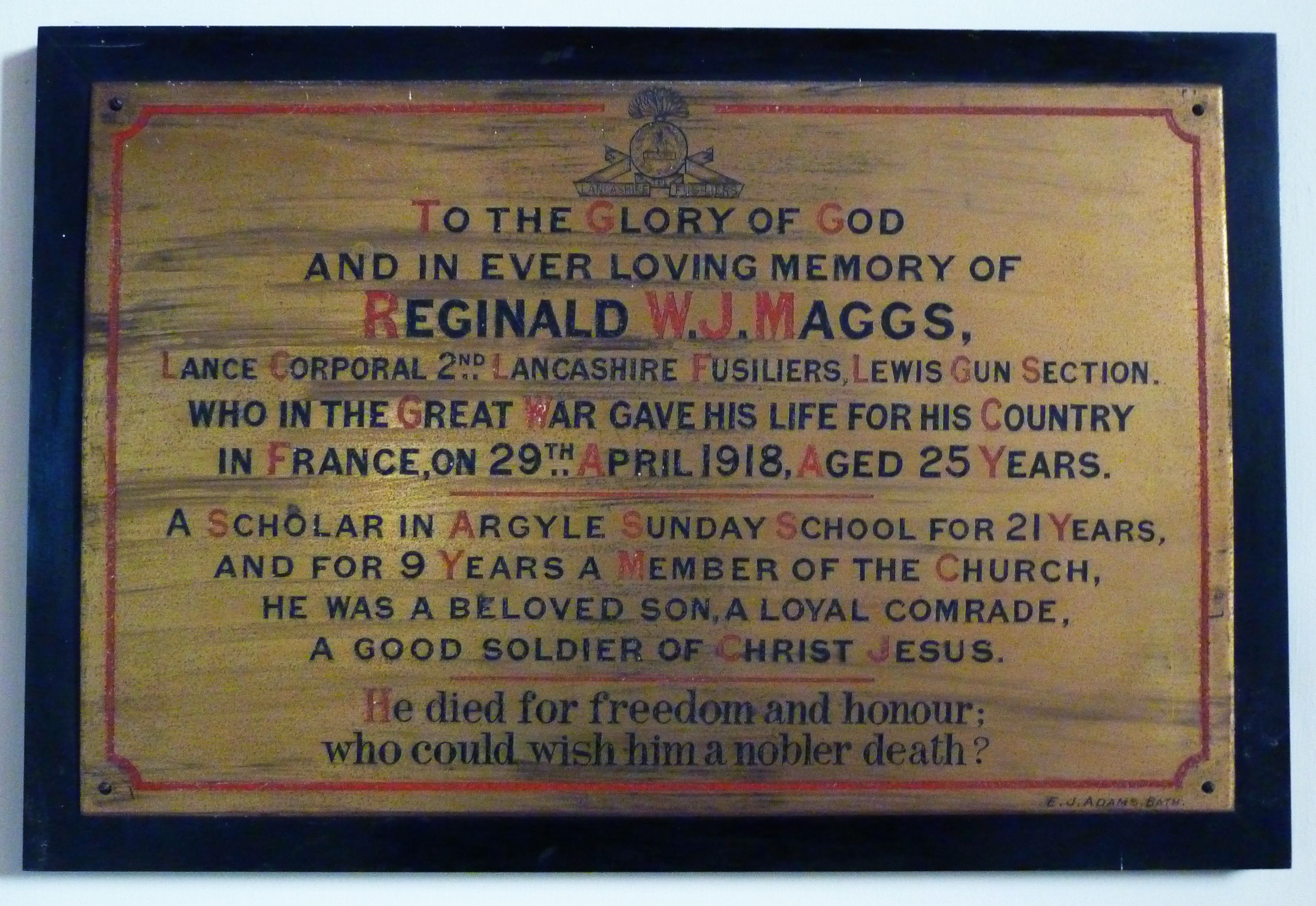 |
|
Family Grave at St. James's Cemetery Reginald Maggs is commemorated on the Maggs' family grave in Bath. That is not to say that his remains were returned to England for burial, but the gravestone in St James's Cemetery on the Lower Bristol Road bears a dedication to him. If you wish to find the grave, it is just to the south-west of the chapels, across the roadway from the large obelisk memorial. |
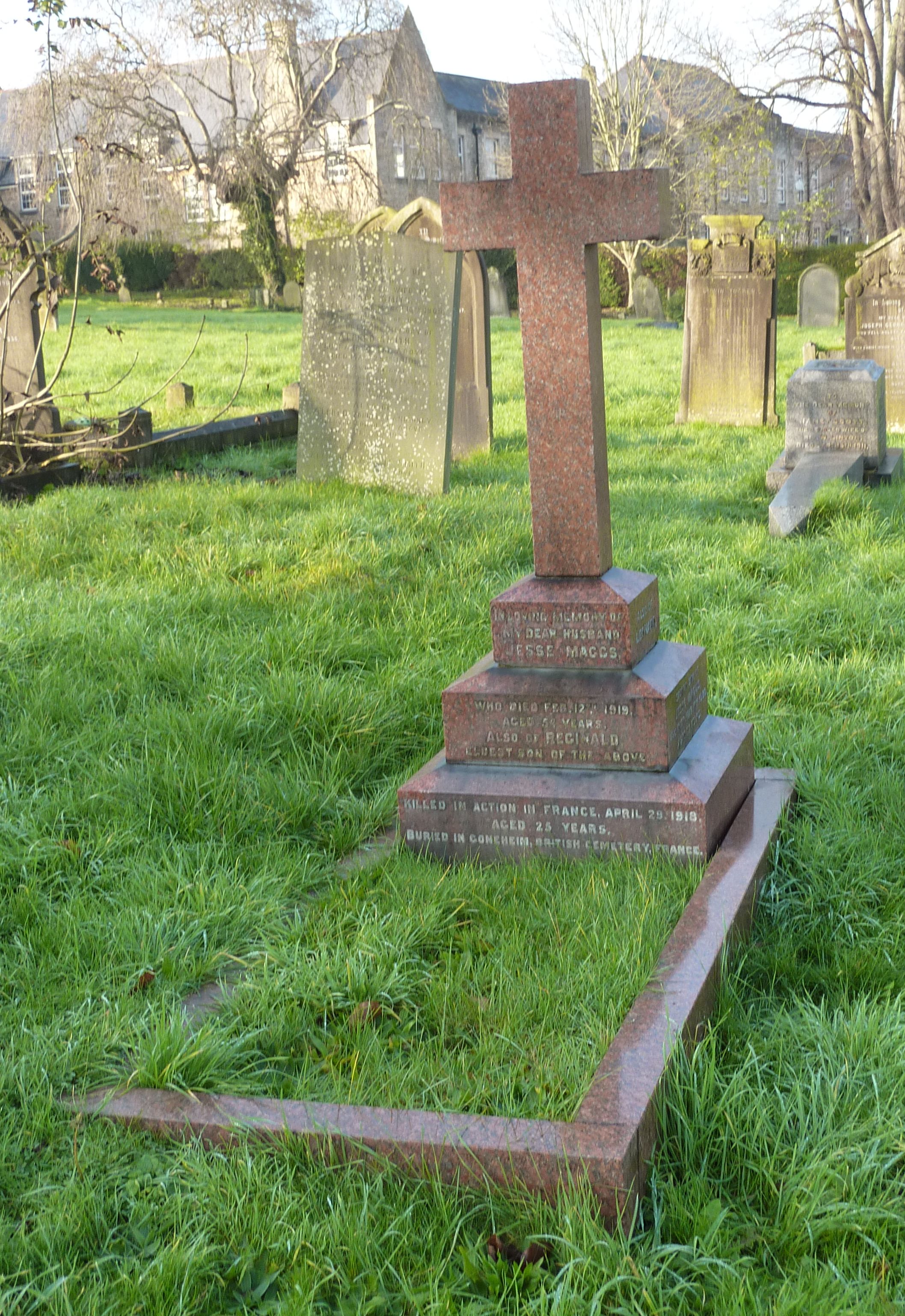 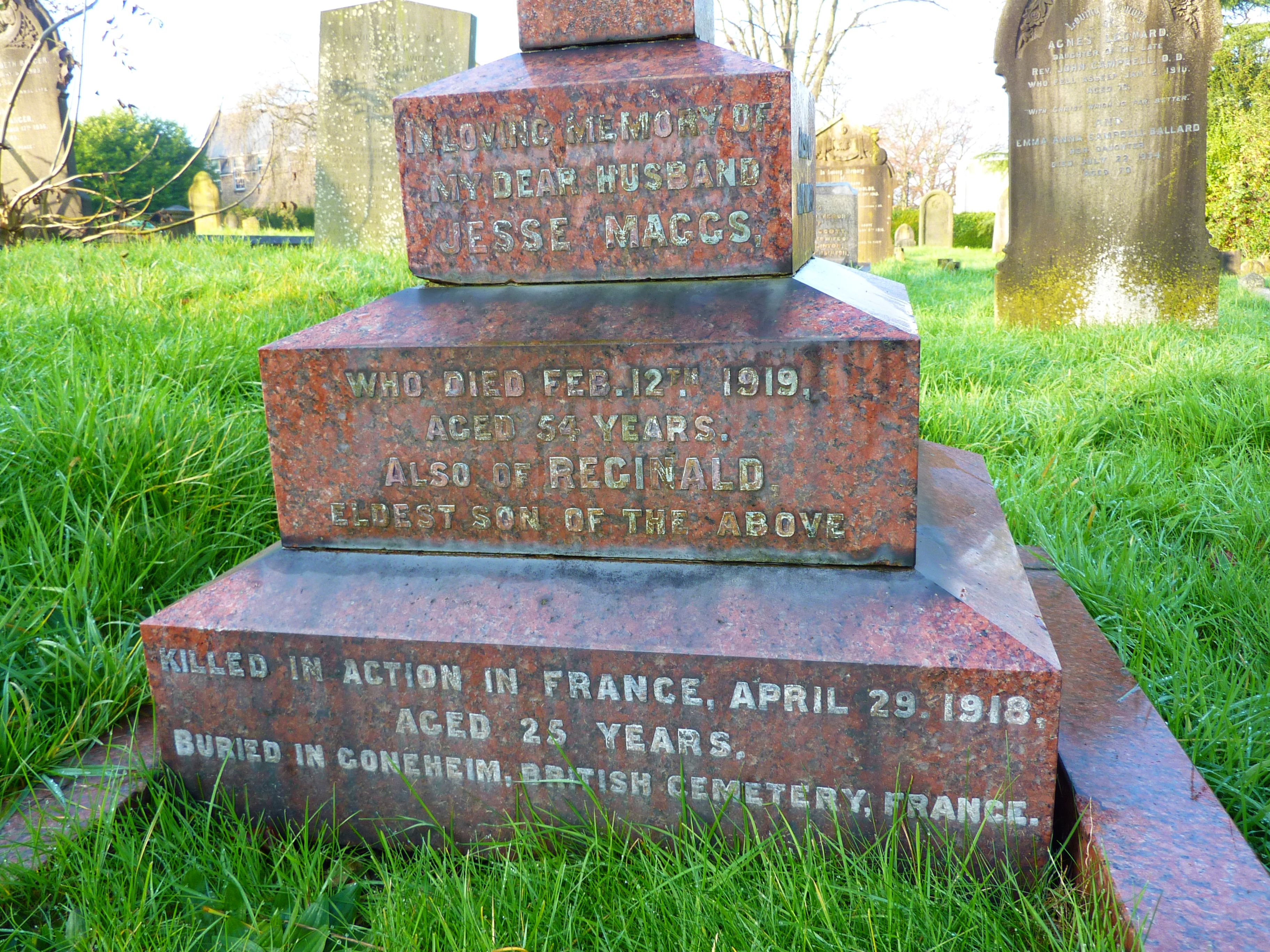 The inscriptions on the memorial include the words: In loving memory of my dear husband Jesse Maggs who died Feb 12th 1919 aged 54 years Also of Reginald eldest son of the above killed in action in France, April 29th, 1918 aged 25 years Buried in Goneheim British Cemetery, France The family also remembered Reginald in a memorial notice in the newspaper (3rd May 1919):  |
Further Information |
After the war:Lancs Fusiliers Bereaved Fathers ReunionAmong the old photographs supplied by Malcolm Curran (Reginald's nephew) is a touching photograph of a reunion of bereaved fathers of men in the Lancashire Fusiliers (probably 2nd Battalion only), held late in 1918. Reginald's father Jesse appears in a boater towards the right-hand side of the photograph.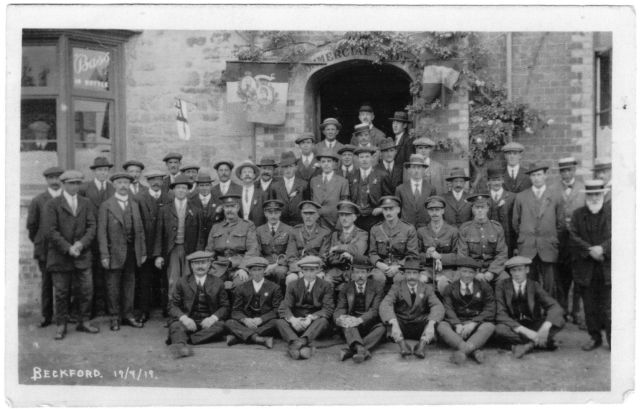 2nd Lancs Fusiliers Bereaved Fathers, Autumn 1918 [Photo supplied by Malcolm Curran, nephew of Reginald Maggs] Jesse
died a short time later, in February 1919. It is said in the family
that he was heartbroken over the loss of his son and never recovered. 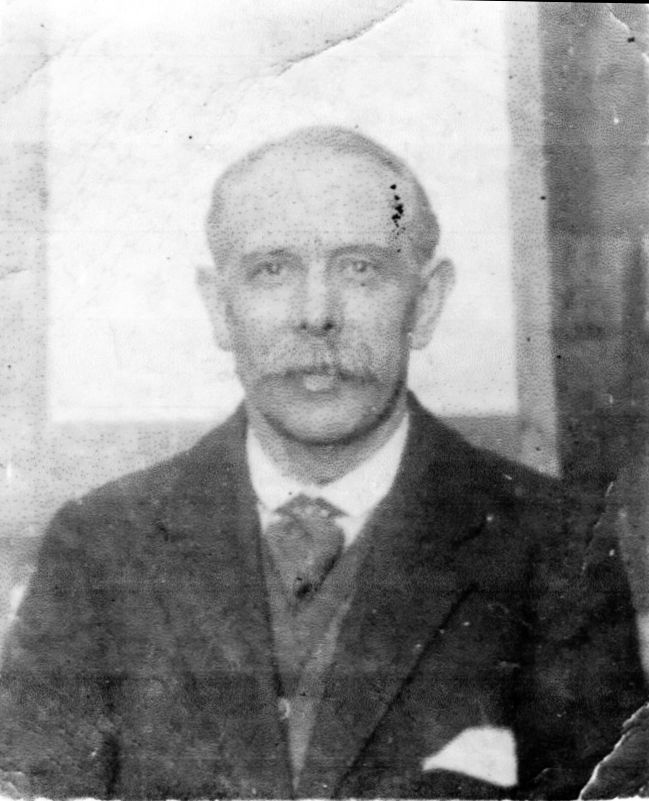 Reginald's father, Jesse Maggs [Photo supplied by Malcolm Curran, Reginald's nephew] Bathwick School Old Boys ReunionAn interesting article appeared in the Bath Weekly Chronicle
& Gazette on 1st November 1919, describing the reunion of
Bathwick School old boys who had returned from the war. The first part of the
report details the ‘proud record’ of the ex-pupils during the war and the many
distinctions, commissions and decorations that they had to show for their
efforts. Mention was also made of the how early the lads had joined up and that
several wore the ‘Mons ribbon’ (the 1914 Star, awarded only to soldiers who
entered a theatre of war – usually France – before 23rd November
1914). But those who had fallen were also remembered and Reginald
Maggs was singled out for a mention in this regard: “But there were some who had not come back: the old boys who had served
their country with the best they could give; their own lives. In speaking of
them he could do no better than quote the words of Rupert Brooke: If
I should die, think only this of me, That
there’s some corner of a foreign field That is for ever
England! “These lines the Rector followed by reading the verses written by Mr.
Henry Chappell about the death of one of their old boys: Reginald Maggs.” 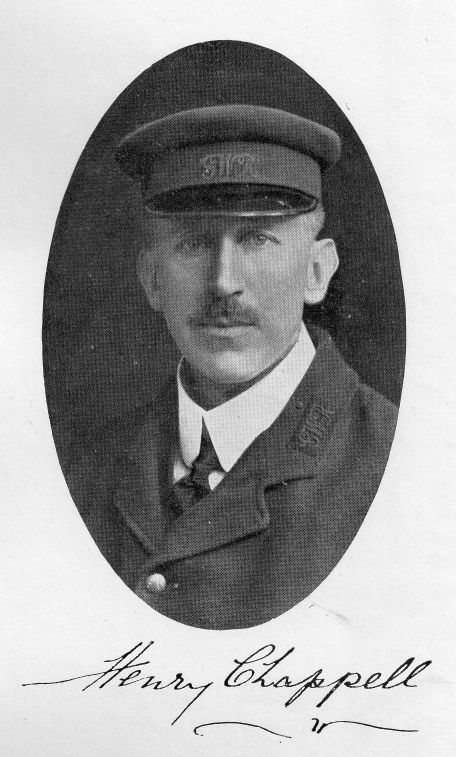 Henry Chappell, as seen on the frontispiece of 'The Day and other Poems' After a long search, the poem written by Chappell in memory of Reginald Maggs has been found (thanks to the staff of Bath Record Office and their in-depth knowledge of the more obscure parts of the city's archive) and can be reproduced here:  FOOTSTEPS Dead son of mine, when first two tiny feet With step uneven traced a league-long yard, Then in my heart your throne was set complete, And love about you mounted royal guard. For you I tireless wrought, adventured, planned, Nor dreamed that I was building on the sand Then eager steps a hundred times a day Raced up the stair and down and in and out, Luring me on to join the boyish play; Making me one in prank and merry bout. Day was a garden lit by sunny beams' And night another day of happy dreams. With ev'ry passing year my burdens fell, For you, my son and friend, took up the load. Love came to you, and all the world went well, And life stretched out before, a shining road. I saw the promise fair of youth unfold And all my harvest ripening to gold. Then came the call, the parting and the pain, When hands alone had voice to say goodbye. Now death has trampled down the golden grain, And all my palaces in ruins lie. O costly bays that sacrifice have won! The throne is empty, I have lost my son. England's the glory is, and mine the loss, You were mine own; to England one son more Of legions who for her have borne the cross And laid it down on weary hearts and sore. I take my cross, and if my head be bowed, The parent mourns, the patriot is proud. Dead son of mine, it may be that you know, Grieve for my grief, and sorrow for my tears, So for your sake the tide shall inly flow; I lift my head and face the empty years. Day with its memories of bitter-sweet, Night with its echoes of a soldier's feet. Henry Chappell Living relativesOn Remembrance Day 2016, it was wonderful to receive an e-mail from Malcolm Curran, who is Reginald Maggs' nephew, the son of Reginald's youngest brother Richard. A few e-mails later, and Malcolm soon supplied numerous photographs and items by post, which are now reproduced in the biography above. They have provided fantastic additional insight and helped to piece together more details of this much-commemorated man who, through his work in an everyday tobacconists' shop and involvement in numerous churches etc., must have been known to many in Bath. Around the same time, Malcolm's sister (Reginald's niece) Shelagh Padfield (who still lives in Bath) was kind enough to call in to the school and spend time talking to the Head, Mr Goucher as well as supplying further information about Reginald. We are extremely grateful for these contributions. It was very special to welcome Malcolm and Shelagh to the school's November 2018 commemoration of the centenary of the end of WW1, to which Malcolm brought Reginald's death plaque to be included in the remembrance of Reginald by school pupils. Shelagh and Malcolm were very appreciative of the school keeping the memory of Reginald Maggs alive.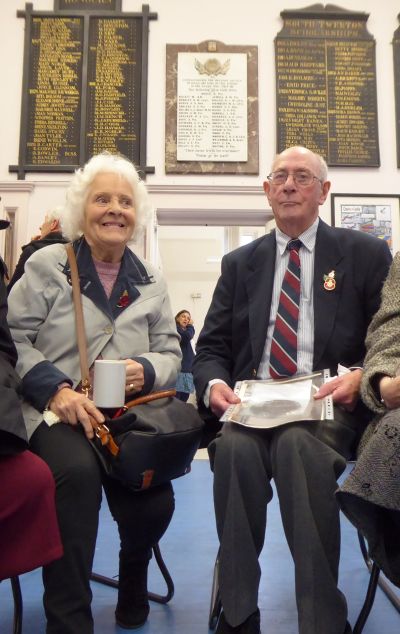
It would be great to hear from any other living relatives of Reginald Maggs. Three of his siblings survived into adulthood, as far as we know, and so there may be living descendants of:
Please get in touch!If you have any further information on Reginald Maggs, or want to suggest corrections / improvements for this page, please use the Contact page to get in touch.All additions and further information will be credited appropriately. AcknowledgementMany thanks to Mr David Carter for supplying the photograph of Reginald Maggs. |